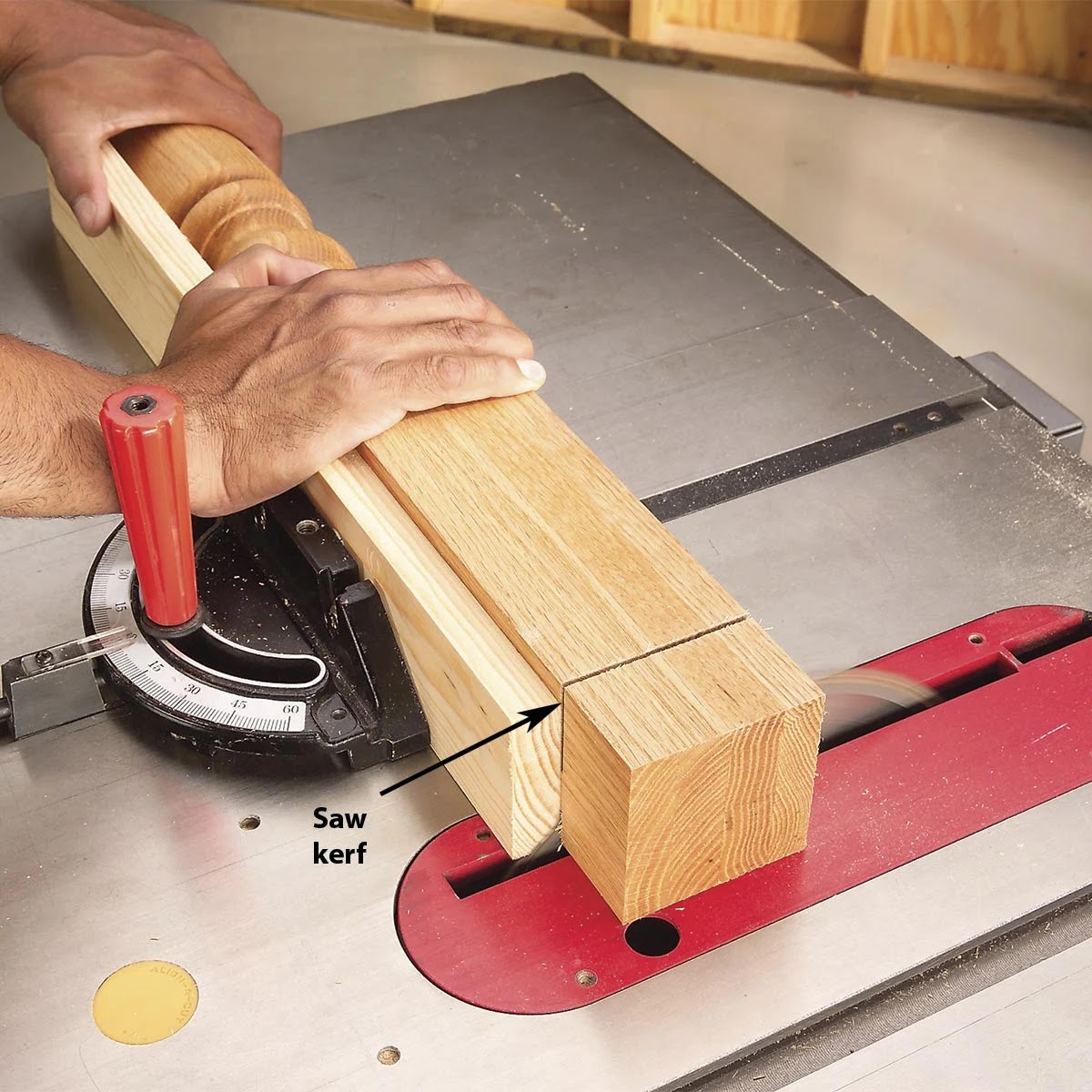The forgotten kerf

Let’s say you need to cut three lengths of 1×4 material, each 100cm long. By happy coincidence you have a 300cm stick of 1×4, so you quickly measure and mark two lines, and then make your cuts. But when you go to use the pieces for your project, you find that two of the pieces are too short. The reason is because you forgot to factor in the kerf, or thickness of the saw cut.
The kerf is determined by the width of the blade (usually 3mm) but also the wobble in the cut, and the size of any material torn out by the blade. It’s the reason that you have to give a little extra thought to planning your cuts. Happily there’s an easy solution to stay ahead of this common mistake. Always measure and mark each cut. (You can use a tape measure, or speed up multiple identical cuts by using a pattern stick or stop block.)
If you want even more precision, here’s a great tip to allow you to see exactly how much of the stock board the kerf will consume. Begin by making a partial cut into a scrap piece of lumber. This will leave a shallow channel in the surface of the material. Then trim the lead of your carpenter’s pencil until it precisely fits the width of that channel. Now with every mark you’ll see the exact width of the kerf before you make your cut.
Blowout

Blowout (sometimes called “tearout”) is the name for the ugly result when chunks or fibres of wood are torn out behind a saw blade. It can happen with any kind of cut, on a table saw or a mitre saw, or even a router or drill. Avoid unnecessary blowout by paying attention to your blade before you start to work.
A dull blade will tear as much as it cuts, and should be avoided for this reason and for safety concerns. Similarly, choose the right blade for the job: A saw blade with fewer teeth will cut faster, but result in more tearout. More teeth on the blade will require a slower hand but result in a cleaner cut. You can often find special blades for materials, such as OSB and linoleum, that are particularly prone to tearout.
Another trick is to protect the material with painter’s tape. Put the tape on the side that the blade will be emerging from, as that’s the area most prone to blowout. Blowout is one of those issues that will continue to be a problem for your woodworking career, but learning how to deal with it early on can seriously reduce the number of headaches.
DIY Basics: Essential Guide To Stationary Power Saws will also help.
Finishing in a dirty environment

We get it: it’s tough to keep a workshop sparkling clean. But for some jobs, the environment can be just as much of a factor as your craftsmanship. It can be extremely tempting to complete a woodworking project and immediately move to the finish stage. But if you’ve been running a saw, the surrounding air is filled with dust and debris. When you lay down a stain or finish, all that dust is going to settle and stick to the surface, marring your project and ruining the beauty of the wood.
If possible, do your finish work in a different location than your build. If that’s not an option, give the room plenty of time for the dust to settle, or consider a dust collection device. A little dust on the first coat isn’t necessarily a deal breaker, but there’s nothing more frustrating than having a beautiful piece ruined by the remains of your earlier work.








